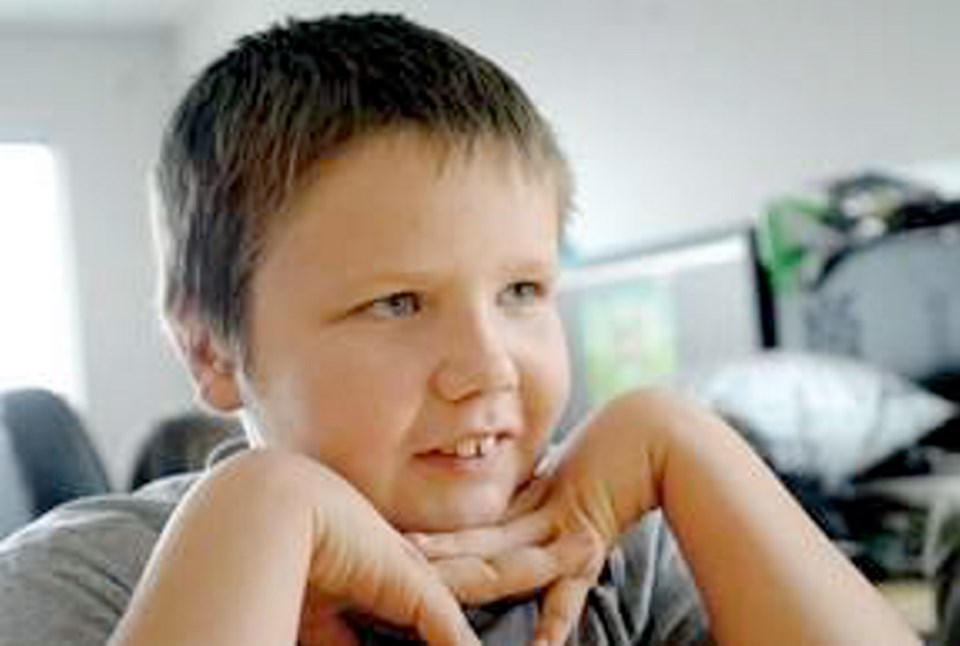When Sebastian Sundquist first started showing arthritis symptoms at the age of four, his parents weren't sure what to think.
"We actually thought he was faking at first," Sebastian's mother Stephanie said. "I had just had his little sister and so he'd gone from being an only child to having a little sister and suddenly he started complaining and not walking and whining about everything — but it turns out he wasn't just pretending to get attention."
Sebastian is one of about 24,000 Canadian children — about three out of every 1,000 people under the age of 18 — who live with a disease that is normally associated with people much older.
When he was first diagnosed the pain was so bad that he had to be carried out of bed in the morning, but eight years on from his diagnosis he's able to participate in athletic endeavours as diverse as swimming and mixed martial arts.
"I'm not as fast as other people, I can't do as much of PE even though I try and I get stiff very easily," he said. "If I'm sitting in class for an hour or half an hour, I have to walk around the hallway because everything is really stiff."
Arthritis has been a learning experience for Sebastian as he's progressed through the disease. He can explain exactly how the disease manifests itself in his knees, ankles and feet — "It's white blood cells attacking on the knees, attacking it like it's a foreign object" — and he can rattle off the names of the medications he's been over the years and describe their side effects.
He now received a weekly injection into his arm, but at times has needed needles right into his knees when they've swelled up to the size of melons.
"I get shots every week and a blood test every month, so honestly, a few shots into the knee isn't that bad," he said. "When I first got them I felt like a pin cushion, but now it's OK."
This month, the Arthritis Society is encouraging people of all ages with the disease to share their stories and talk about what it's like living with arthritis. The hope is by getting people talking about the challenges and successes, that people will realize they aren't alone.
The Share the Pain program also aims to educate people that arthritis can strike anyone at any age, like Sebastian.
Prince George resident Jeannette Foot has been living with arthritis for 12 years and like Sebastian, it came on quickly.
"It was every joint in my body at one point, including my jaw," she said. "It was feet, ankles, knees, hips, shoulders, elbows, hands — so it was difficult to even sign your name."
In the early days of the disease, it was so bad that Foot needed help from her husband to get dressed and feared she'd soon be confined to a wheelchair because her mobility was so low.
Diagnosed at 55, Foot had to deal with the physical toll the disease does to the body but also the emotional toll of not knowing how arthritis would affect the rest of her life.
"You go through a depression to start with, because your whole life is changing," she said.
Although Foot can't do everything she could in the past, the combination of treatment and exercise still allows her to stay active as long as she paces herself. Water-skiing and long hikes are out, but she can still downhill ski as long as she takes it easy.
Whereas at one point she was unable to lift things or bend over to open cupboards, she can now do those daily tasks.
For the past nine years, Foot has been teaching a class on arthritis self-management through The Arthritis Program. The class, which is one afternoon or evening a week for six weeks, teaches everything from what arthritis is and how to manage medication to dealing with the mental side of the diagnosis to the best exercise ideas.
"I think arthritis teaches you the meaning of patience," she said. "It takes many years to get back to where you're moving very easily and you can actually function and do a lot of things."
Over the years. Foot has had people as young as 17 and as old as 90 in her course and has noticed many people diagnosed in the 30s.
The classes are generally run both in the spring and the fall, but are dependent on the number of people who sign up. Aside from the lessons she teaches, one of the big benefits Foot has found has been getting people to talk about how they feel.
"Once people start talking about it and dealing with it, it's not as bad as they thought it would be," she said.



